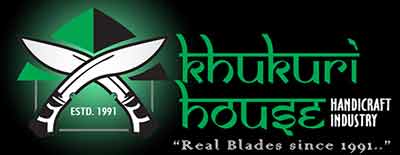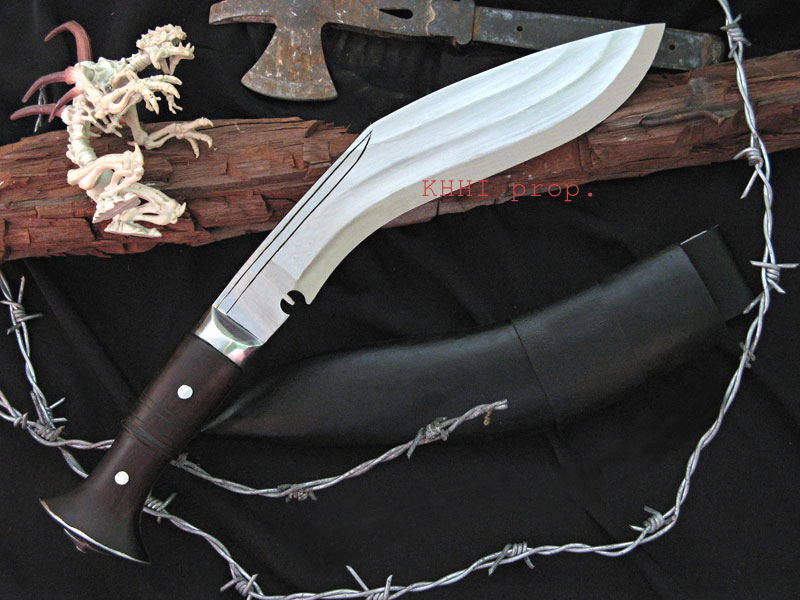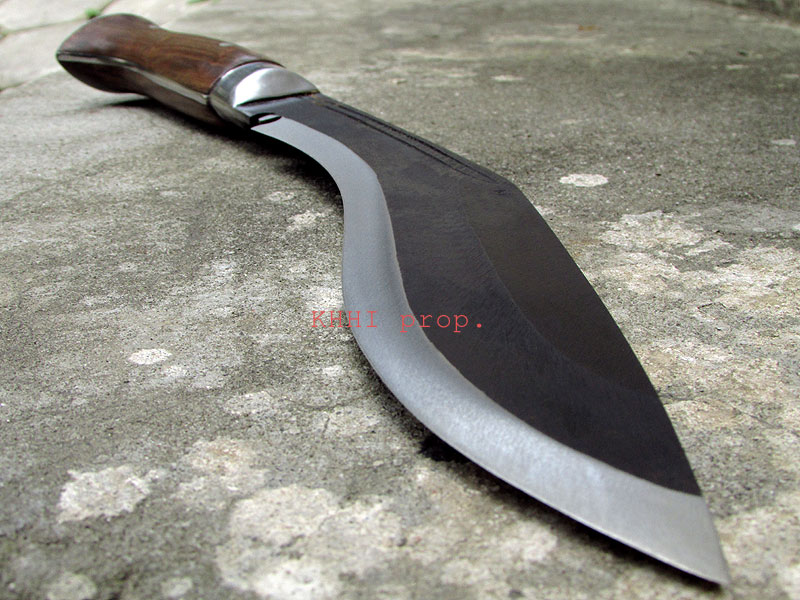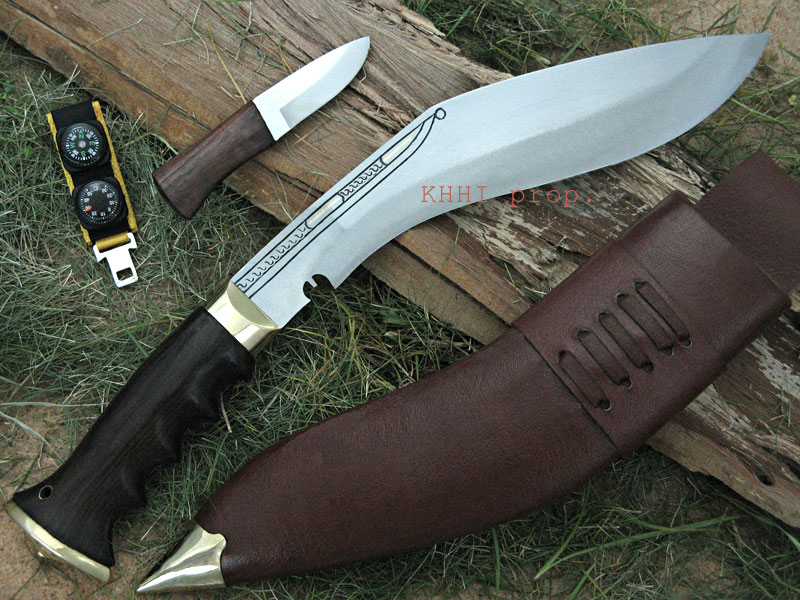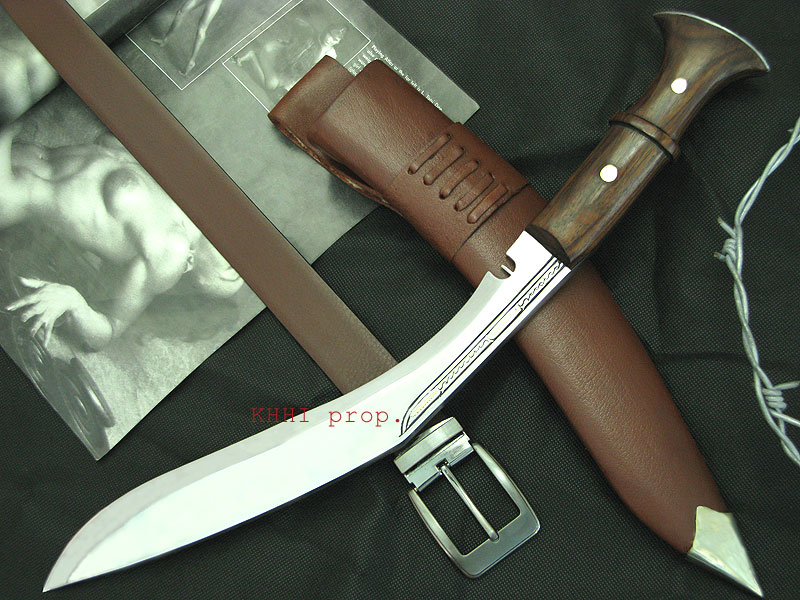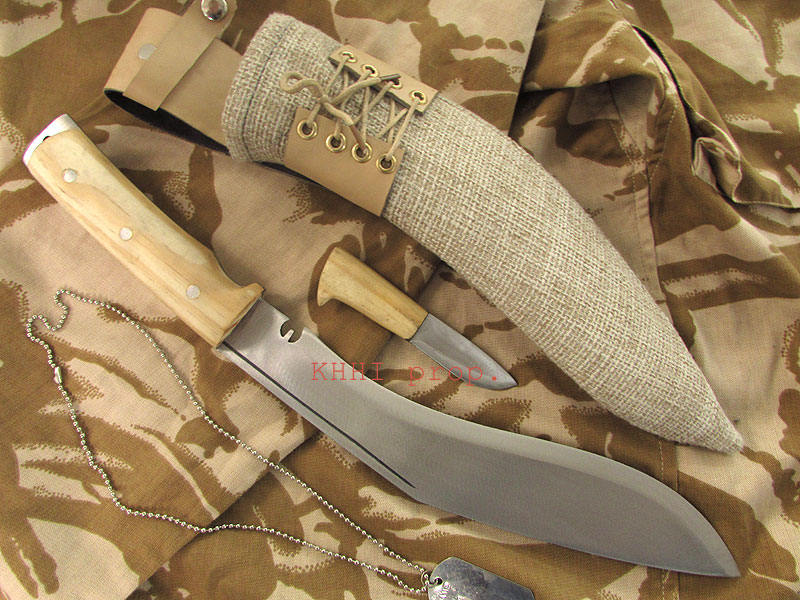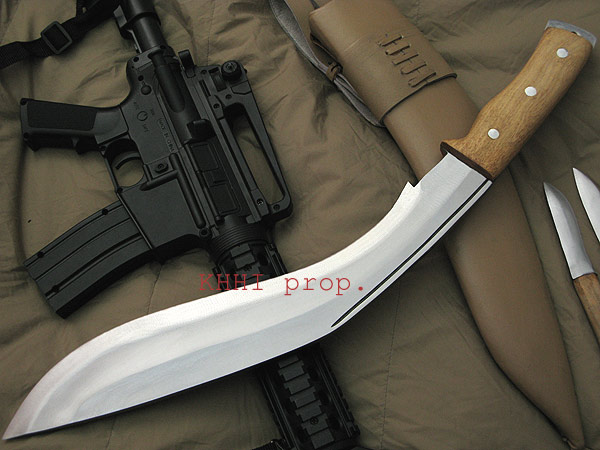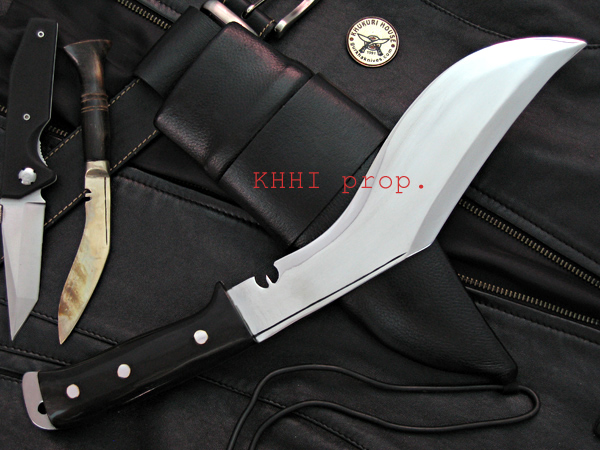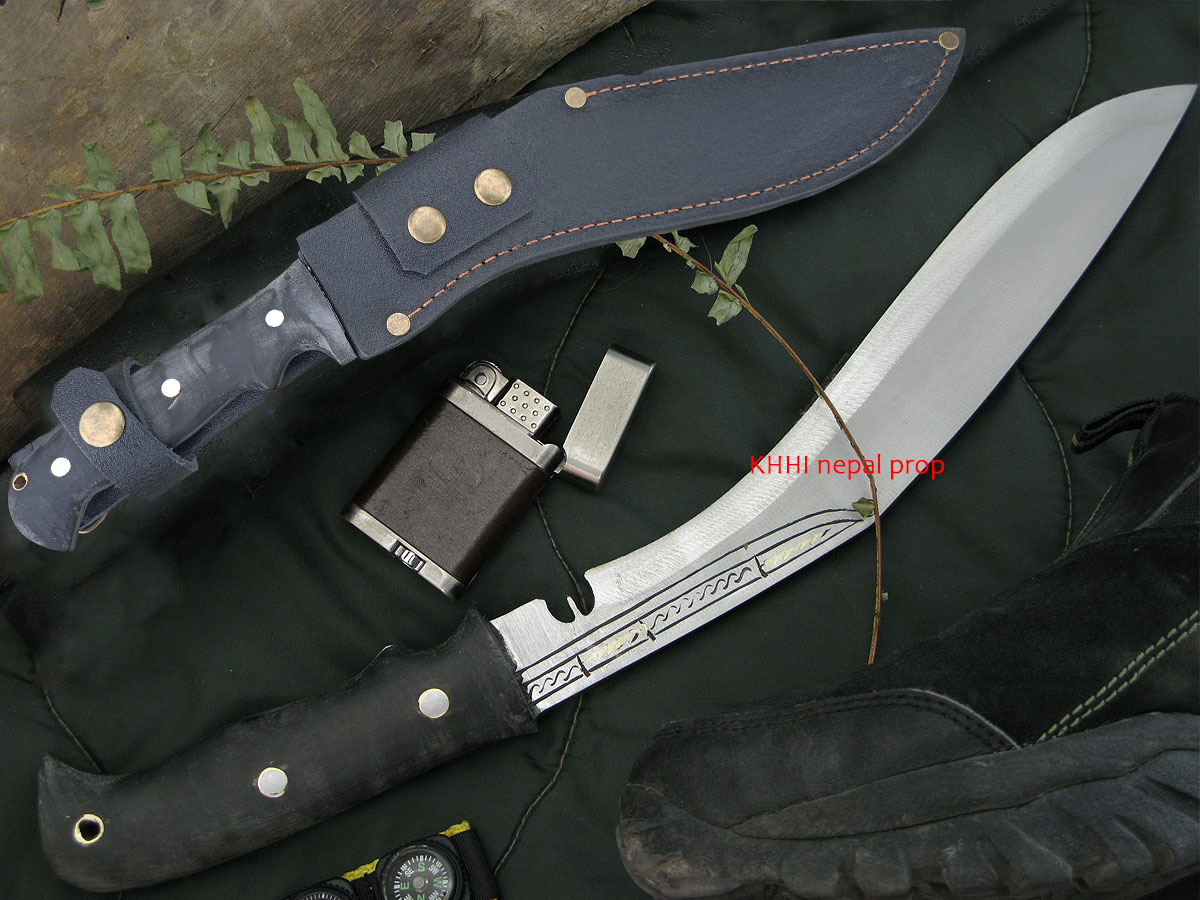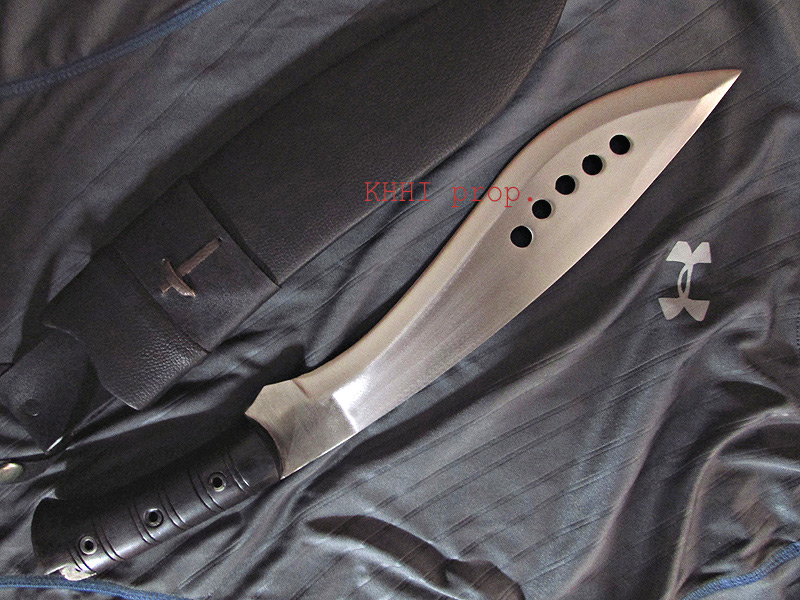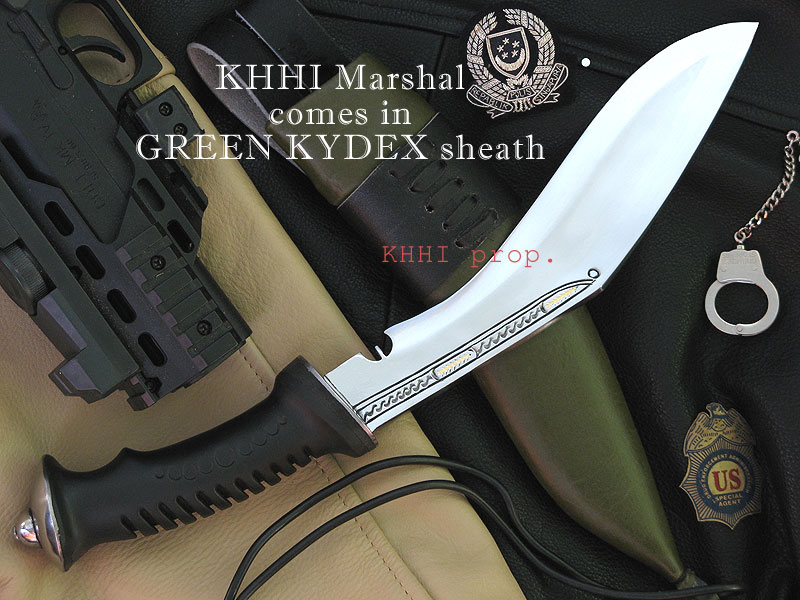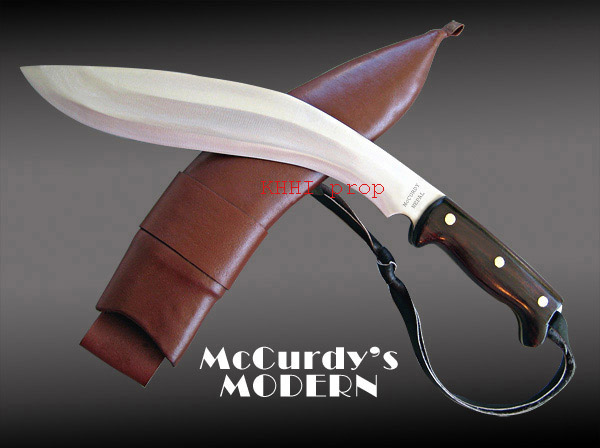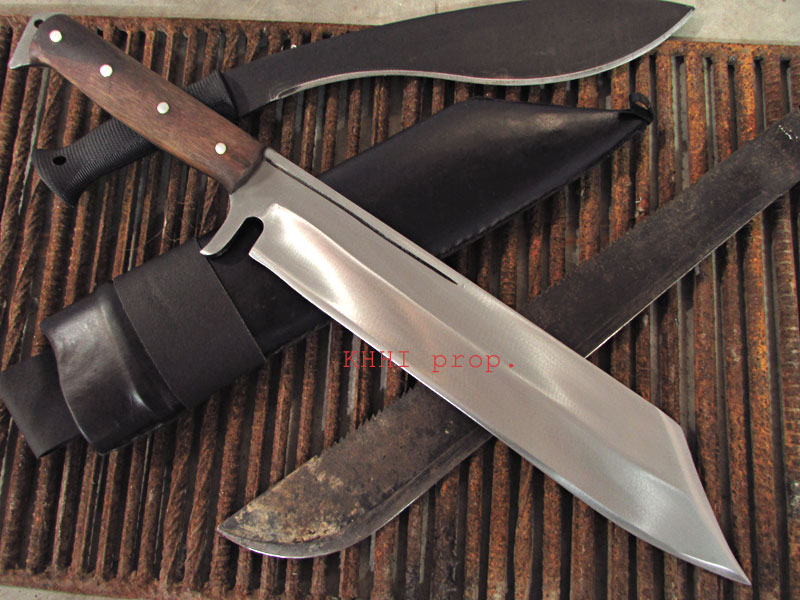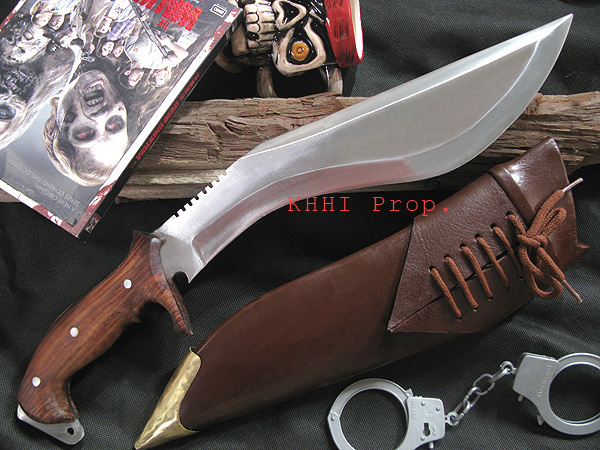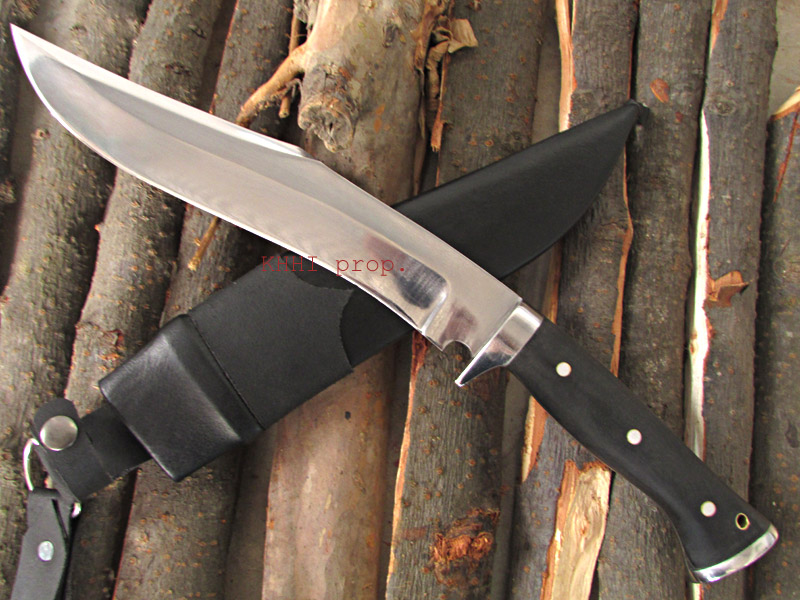Modernization of khukuri and our ever changing catalog
19th February, 2020
How khukuri got transformed from a traditional domestic knife to an advanced multipurpose tool worldwide?
Hey folks,
Greetings from Nepal. Sunny days and warm evenings are slowly showering here in Kathmandu and surely feels nice to wake up early in the morning in high spirit. Today I was thinking about writing in brief about our catalog and variety that we have been offering since establishment. Please do bear with me and hope you’d enjoy this small article from me.
Around 2000 and even before I took over Khukuri House (KH) I had already felt that our collection (product range) was quite weak. My father, Mr. Lalit Kumar Lama, was a visionary man and he really uplifted the quality and standard of the khukuri but somehow I did not think he gave enough attention to the varieties (range) and how the choices can be strengthened. Various traditional models (core kukris) were on the shelf but there was a limitation and not too much to offer. Hence as soon as I joined KH I immediately started my work on improving and extending our product range. The first job was to strengthen the traditional range so I added some fresh pieces along the line of typical design by mixing and editing various features. Few got very good responses from the market and were instant hit like the 3 Chirra (Beast), Raw Panawal, Panjawal Ranger, SiruPana.
The next step was a big one but a risky one. I wanted to take a break from the traditional versions and modernize them; give something new to the people but staying within the “khukuri” platform. Results that followed after much research, idea, trial & error, discussion, and patience were highly welcomed by the audience and definitely filled in the vacuum that had been there for so long.
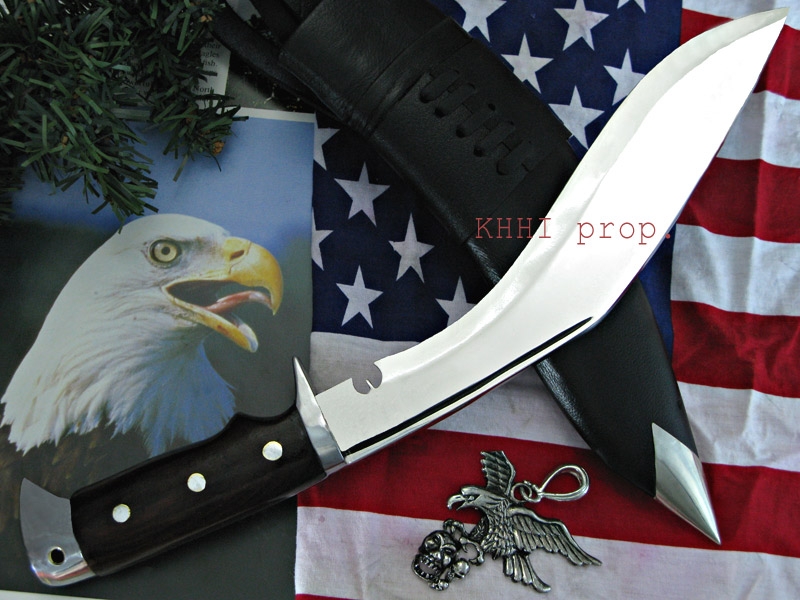 One of the most satisfying creations was the “Eagle” version which I named after the bird and the 1st model to go into production was the “American Eagle”. It was a brand new type of handle that gave a much-needed boost, an image to the khukuri, and a whole new reason to have this knife. The far Western and European world really liked it and accepted the design wholeheartedly. The new look of the typical kukri with its major “Safety-First” component was the powerhouse feature.
One of the most satisfying creations was the “Eagle” version which I named after the bird and the 1st model to go into production was the “American Eagle”. It was a brand new type of handle that gave a much-needed boost, an image to the khukuri, and a whole new reason to have this knife. The far Western and European world really liked it and accepted the design wholeheartedly. The new look of the typical kukri with its major “Safety-First” component was the powerhouse feature.
Similarly periodic release of modern and improved versions like the Operation Enduring Freedom, Defender, Chukuri, SiruPate Hunter, I am ELI, Marshal added depth and strength to our collection.
Next came the REPRO versions.. time was high to dig out the famous and valuable historic kukris from its graveyard (despair) and bring them to the audience. These great legendary khukuris had almost lost their identity so a major step had to be taken. This also got a positive response and I was able to bring some good recognition and awareness to the market to these knives.
Then I also did various straight knives beyond our main product line to give more choice to the people who were after handmade knives made in this part of the world. The feedback was good and helped to further cement our capability as an all-round knife maker.
Furthermore, I always wanted to do collaboration projects with individuals as I knew it would add flavor to our already well cooked food. Some joint projects like McCurdy, Mukti, Scourge, JB Bowie from that time were big timers and I have to admit that we struggled to maintain its healthy stock. All these new khukuris regularly coming up into our product catalog really helped us to prove our ability and permanently sealed our name as one of the best knife makers of modern times. I have to admit the gambling really paid off and the reward from risk was thoroughly gratifying.
Besides the vast adjustment and improvement in varieties, the idea of doing little things and fine tuning the basic features also made a big impact on the market. People were now finding the kukri so much handier, effective and functional comparatively. Small additions like tip-loop, lanyard hole, L-key system, strap button, BCC (black chemical code), back up, upper edge, etc. gave a big boost to the typical khukuri.
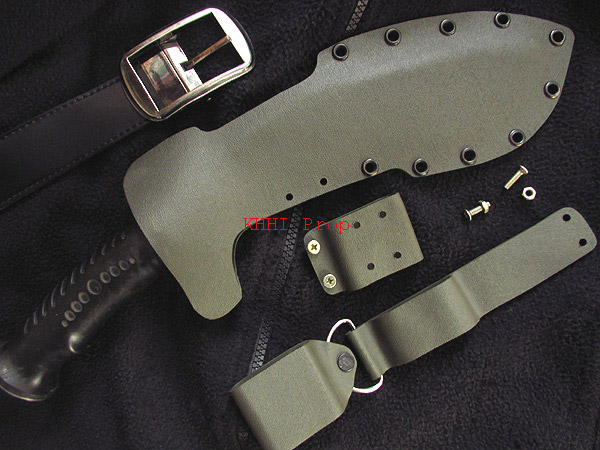 In the same way, the modernization of sheath from traditional to western all leather and Kydex sheath gave fresh look and more value. It totally uplifted the standard of the production of KHHI to a complete new level and on how the market was now looking into the khukuri.
In the same way, the modernization of sheath from traditional to western all leather and Kydex sheath gave fresh look and more value. It totally uplifted the standard of the production of KHHI to a complete new level and on how the market was now looking into the khukuri.
Likewise naming the knives with new interesting and western words added more appeal and gave the X factor to the khukuri. The words were much easy to pronounce and memorize and in many cases kukris were known more by its English titles rather than the typical Nepali names or terms. Similarly a complete new concept of taking photos with its related background, offering khukuris with extensive description, well detailed specifications and profile of each kukri and extensive general information provided the kukri with new meaning, mass and market. The whole scenario was changed and I can say proudly that kukri was fortified. On the other hand usage of technology, online platforms and the internet made huge positive impact in the development of the kukri. It was so wonderful to see khukuri compete with the famous knives of the world. The feeling was simply priceless.
Finally, concluding my words I would say that besides the quality, variety also gave a tremendous lift to the company and the overall standard and image of the khukuri. People had much more choices now, “knives for every purpose and people”. A new window was open that made the good old khukuri more useful, lively, and lethal, and this added value like never before.
I personally take utmost pleasure and I am thoroughly satisfied to see how the kukri is today after all my inputs. To take it into this new height and glory has always been the pinnacle of my career as an entrepreneur and a great fan of this beloved knife. I thank you for your time for reading this article. I do hope you enjoyed.
Namaste,
Saroj Lama Tamang (SLT)
